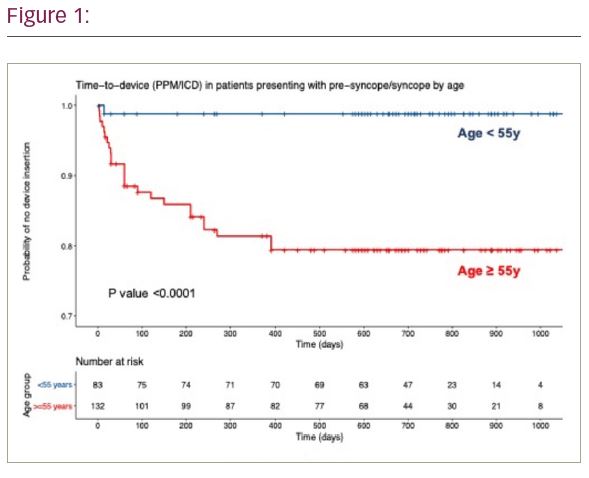Introduction: Implantable Loop Recorder (ILR) procedures are now done by allied health professionals in outpatients; however, it is expensive with a single device costing £3,878. This is in spite of limited evidence regarding the diagnostic utility of ILR so we performed a detailed examination of its performance in the real-world.
Methods: The detailed clinical records of all consecutive individuals who underwent ILR insertion at Barts Heart Centre, London between May 2017 and October 2018 were examined to determine indication for insertion and their clinical outcomes.
Results: There were 325 patients, (54% female; mean age of 59 ± 18). The median follow-up was 575 days (IQR = 323-791). A diagnosis that altered management was made in 86 (26%) patients, at a median time of 90 days (range = 1-775). Indications for ILR implantation were pre-syncope/syncope (64%), palpitations (18%) and AF detection (13%). Only a single patient under the age of 55 who presented with syncope or presyncope underwent a pacemaker implant, this patient had suffered severe injury following syncope, and was diagnosed with sinus pauses on day 14 post-implant. Data concerning PPM/ICD implantation in those undergoing ILR insertion for pre-syncope/syncope by age group are presented in Figure 1. No patient undergoing implant for the indication of “palpitations” was implanted with a pacemaker or ICD. The highest diagnostic yield (≈40%) for ILR was in AF detection for patients with cryptogenic stroke.
Conclusion: Management-altering diagnoses provided by ILR are rare in younger patients, particularly in syncope, presyncope or palpitations. A focus on the medical history, in addition to consumer non-invasive monitoring devices for symptom-arrhythmia correlation, is preferable in younger patients.








